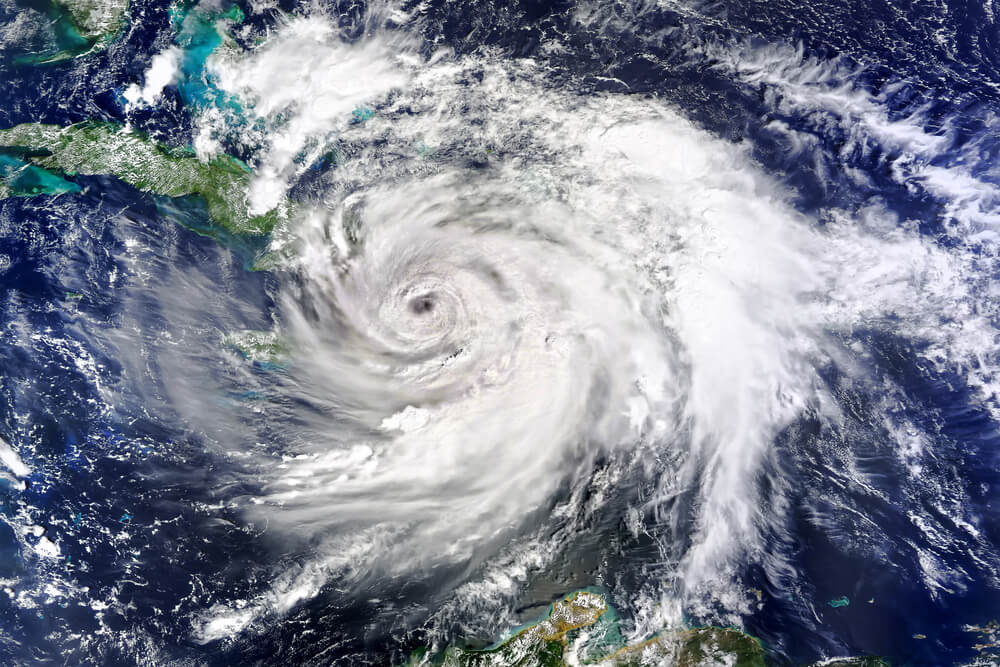Can a Category XNUMX hurricane hit New York: how to prepare for a storm in the city
'02.06.2021'
Olga Derkach
The hurricane season began on May 15th. And if residents of some states are accustomed to the fact that hurricanes are frequent guests, others, on the contrary, are very afraid of this phenomenon. What should New Yorkers expect, whether a strong hurricane can come to the state. If the right set of atmospheric parameters were gathered, would it be enough to trigger a Category 5 hurricane that could hit New York? Edition Tropical weather decided to figure out whether this had ever happened in history and whether such a combination of circumstances was possible at all.

Has New York ever been hit by a Category 1938 hurricane? According to historical records, this has not happened since the founding of the United States. The only major hurricane to hit anywhere near was the 2 hurricane known as the Long Island Express. It was a Category III hurricane that came ashore on Long Island east of New York and New England. Most recently, Category 1960 Hurricane Sandy also swept inland towards New Jersey. In addition, Hurricane Donna (2) struck east of New York as a Category 1985 hurricane. Hurricane Gloria in 2 declined from Category 1 to Category XNUMX when it hit the shore, also east of New York City. So a Category XNUMX hurricane can't hit New York, or just haven't the right conditions formed yet?
Before a hurricane can form, several preconditions need to be formed. There should be pre-existing waves, warm ocean water, low atmospheric pressure, sufficient Coriolis force (inertial force), moderate atmospheric humidity, low vertical wind shear, and divergences in the upper troposphere. Of all the parameters, all are possible except for one factor. The most important component of hurricane formation, especially severe hurricanes, is the availability of warm enough water to power a hurricane heat engine. The water temperature should be 80 degrees (26,6 Celsius) at a depth of about 50 meters.
Nearly all Category 1800 hurricanes occur in the deep tropics. The water temperature is usually in the correct range over a large area of ocean water. Four Category 1935 hurricanes have hit the United States since the record began in the late 1969s: Hurricane Florida Keys in 1992, Camilla that struck the Mississippi in 2018, Andrew that struck South Florida in 5, and Michael in 1935 year, which was upgraded to level XNUMX in the postseasonal analysis. Of these four, Camilla and Michael formed in the western Caribbean, Andrew formed in the deep tropics, and the XNUMX hurricane formed north of the Caribbean. These areas of the Caribbean and Atlantic have large areas of warm water. Most Category XNUMX hurricanes never travel that far north. The greatest threat is to the south, towards the Caribbean Sea, over the open waters of the tropical Atlantic.
On the subject: Thunderstorms, hurricanes and heat: what summer awaits New Yorkers
The Gulf Stream carries warm water northeast of Long Island. The water temperature is sometimes sufficient for the development of hurricanes, even in this extreme north. The Gulf Stream is a narrow strip of warm water instead of a large expanse in the deep tropics. For a Category 80 hurricane to form, the water not only needs to be warm, but it usually needs to be several degrees above the XNUMX degree threshold.
The warmer the water, the more energy is available to the hurricane's heat engine to create a stronger hurricane. The 1938 hurricane was a Category 1938 hurricane east of New York, but there is a big difference between Category XNUMX and Category XNUMX. The XNUMX hurricane also moved northward very quickly, limiting its lifetime over cooler water.
For a Category 175 hurricane to hit New York, it must form far south over a large area of warm water. The hurricane should intensify to a level that only a few hurricanes have ever reached - 281 miles (156 km) per hour or stronger somewhere east of the Bahamas. Thereafter, it will be necessary to quickly travel north before the hurricane loses its Category 251 strength in excess of XNUMX miles (XNUMX km) per hour.
There are problems deploying this script. First, the strong winds needed to blow the hurricane north before it loses strength is also likely to move it and cause weakening. Secondly, without the push from the strong wind overhead, even if the hurricane was very strong, it will still weaken when it encounters cooler water. New York and the northeast are often sheltered by the cooler waters off the New England coast, as well as strong shear winds.
So, could a Category 130 hurricane hit New York? The chances are extremely slim, so close to saying no. Another third category is likely to visit New England or New York. A Category 156 hurricane with a maximum sustained wind of 209-251 miles (111-129 km) per hour is also very, very unlikely, but not impossible. Be aware that a Category 178 hurricane itself can cause catastrophic damage with wind speeds of 207–XNUMX miles (XNUMX–XNUMX km) per hour and high storm surges. Thus, New York will most likely not be affected by a Category XNUMX hurricane, but a weaker hurricane could do serious damage.
And although the probability of the strongest hurricane is very small, New York is still among the ten states that are most at risk of hurricane damage. Universal property:
- Florida: 120 hurricanes (37 hurricanes in categories 3 through 5).
- Texas 64 hurricanes (19 hurricanes categories 3 to 5).
- North Carolina: 55 hurricanes (7 hurricanes in categories 3 through 5).
- Louisiana: 54 hurricanes (17 hurricanes in categories 3 through 5).
- South Carolina: 30 hurricanes (5 hurricanes in categories 3 through 5).
- Alabama 24 hurricanes (5 hurricanes categories 3 to 5)
- Georgia: 22 hurricanes (3 hurricanes in categories 3 to 5)
- Mississippi has 19 hurricanes (8 hurricanes in categories 3 to 5).
- New York: 15 hurricanes (3 category 3 hurricanes).
- Massachusetts 12 hurricanes (1 hurricane category 3 to 5)
Fun fact: The Pacific coast of the United States has never been hit by a hurricane.
Hurricane season runs from May 15 to November 30, but the vast majority of hurricanes hit land in the United States in August or September, although they are known to occur from June to November.
The hurricane season in the Pacific did not pose as great a threat as its Atlantic counterpart, since history has not recorded a single recorded exits to the west coast of the United States.
If you live in one of the 10 most hurricane states by number, getting home insurance and understanding your deductible in the event of a hurricane is extremely important.
On the subject: Not Gone With the Wind: Why Hurricanes Don't Destroy Skyscrapers in New York
It is also very important to prepare for the possible arrival of a hurricane. It is very important to know where to call in an emergency, where is the meeting point for evacuation, what you need to take with you, you also need to take into account information about your health and those of others.
All this information and not only is available on the website of the New York City Department of Emergency Management - by link... You can download the file you need in Russian or other languages. There you can also download an application that will provide you with all the information you need to your phone.
Also, do not forget that the evacuation of New Yorkers is carried out strictly by zone. You can find your address and find out which zone you belong to by link.
This is very important to do in advance, since just recently New York changed the zoning of the city, and approximately 1 million residents are now in other zones and may receive incorrect information.
The city's six zones have been updated to include new data and more accurately identify areas prone to floods and hurricanes. ABC7NY.
Authorities have also renewed the Know Your Zone hurricane awareness campaign to encourage New Yorkers to know which urban evacuation zone they live in and to take steps to prepare for coastal storms and hurricanes.
Residents in these areas may be told to evacuate depending on the predicted strength of the hurricane and storm surge.
“Knowing your evacuation zone, preparing for flooding and checking your neighbors and seniors are simple steps that will make the difference when it matters most,” New York Mayor Bill de Blasio said. "Together, let's stay safe this season."
You can work with your family to develop a plan using the Ready NYC app on the city's website.
Meanwhile, on Long Island, the Red Cross is gaining momentum by updating training for its personnel, resupplying supplies and planning disaster relief exercises.
Residents are also asked to prepare.
“Talk to your family before something happens, plan how you will get somewhere, what you do with the paperwork you need, and don't forget about evacuation planning for your pets as well,” said executive director Laura Curran.
The Red Cross encourages people on Long Island to volunteer for the organization so that they can help their neighbors and loved ones.







